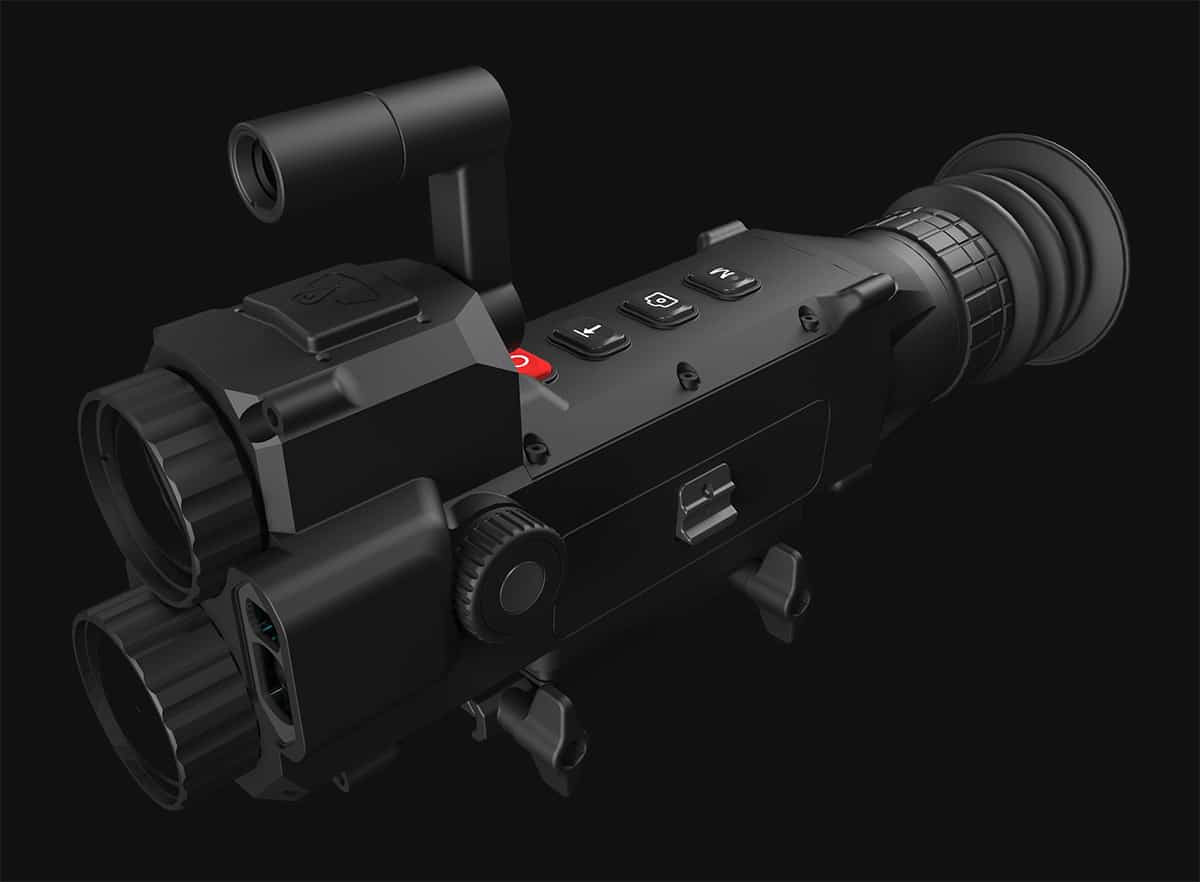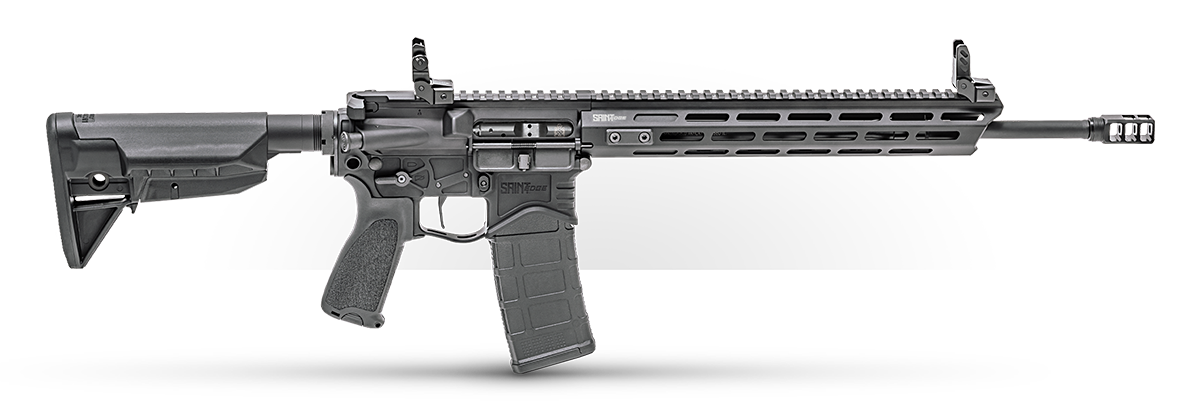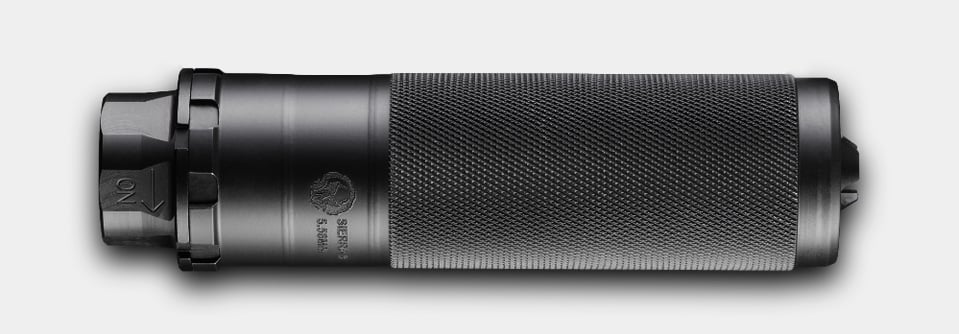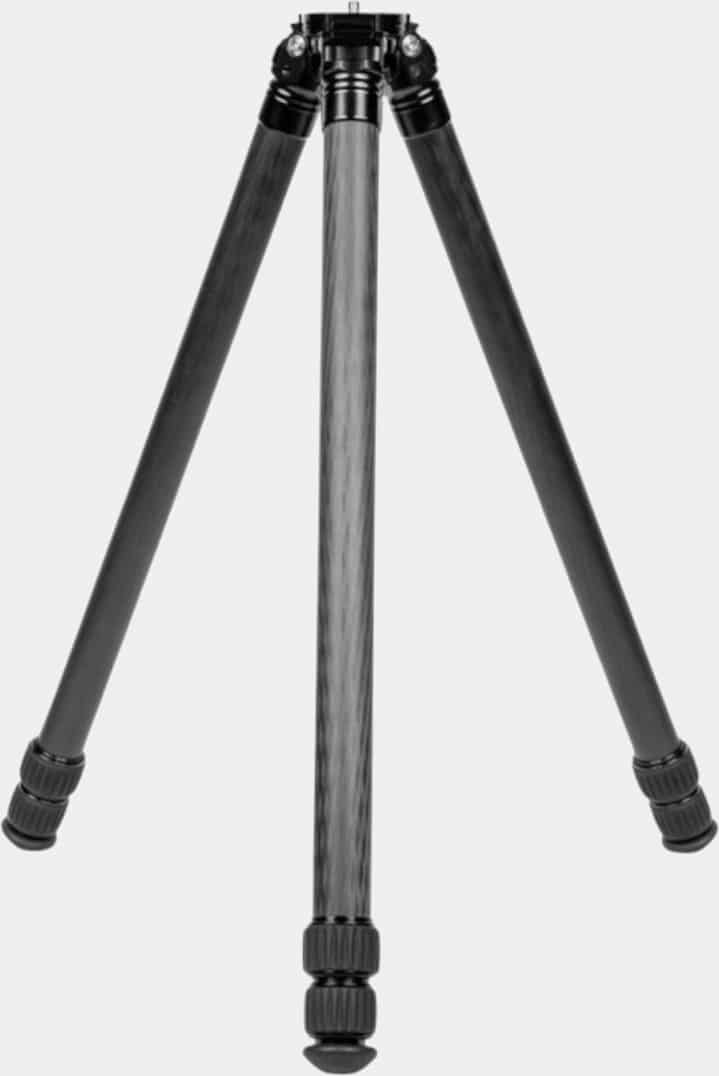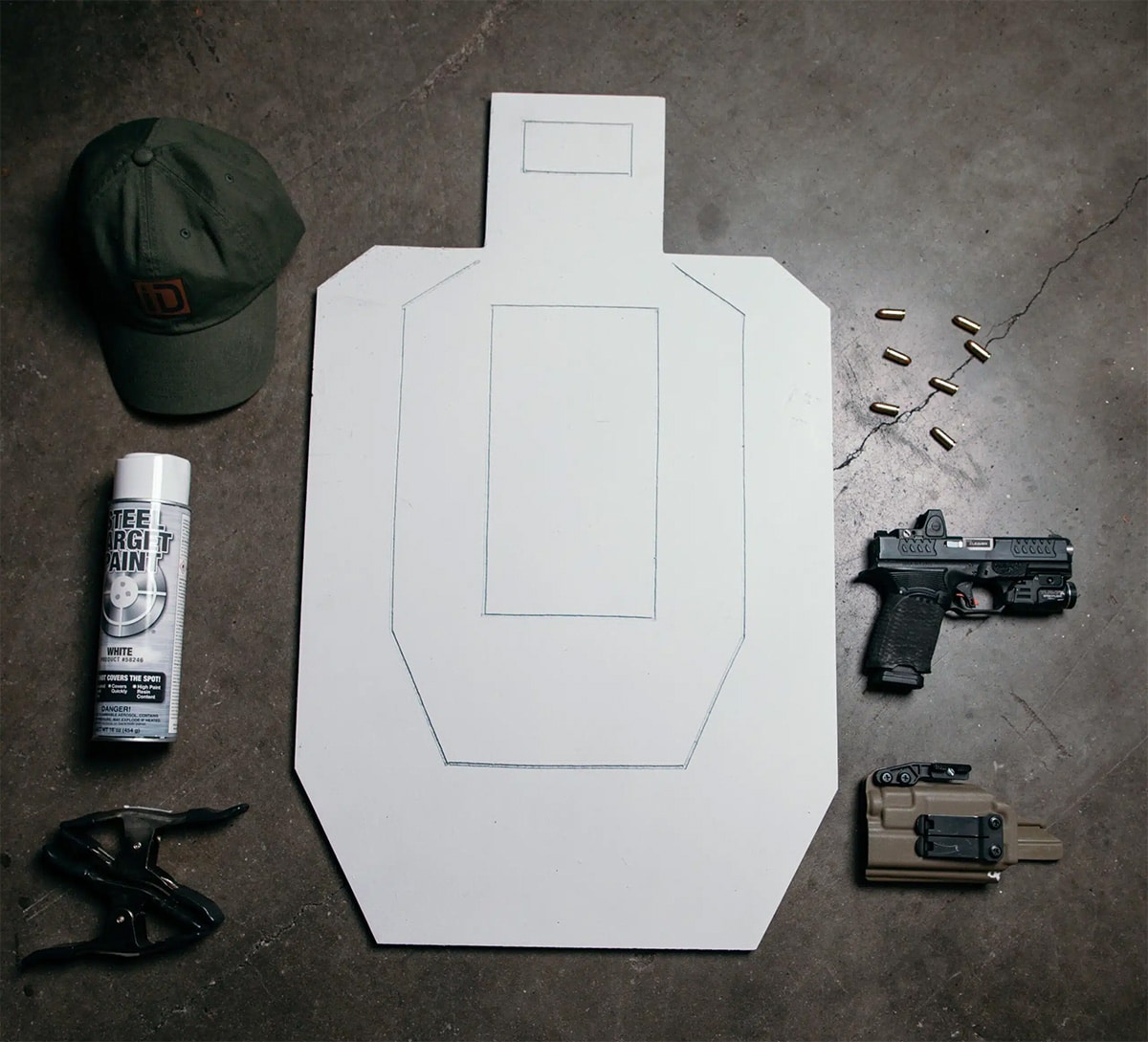Shinenyx AIM-101 Review — Thermal Digital Fusion Optic

I recently had the opportunity to spend some time with the Shinenyx AIM‑101, an impressive “fusion” electro optic that combines thermal imaging and digital night vision into a compact, feature-rich unit.
I tested it throughout a few different environments and conditions: at home, at the range, and out in the wild between daytime and night time usage. This write-up covers my initial impressions, some of the key features of the AIM-101, what stood out to me during my experience, and for whom I think this unit is ideal.
What Is the AIM‑101?
The Shinenyx AIM‑101 is a fusion optic that blends digital night vision and thermal imaging into a single scope. Unlike traditional standalone thermals or night vision units, this optic allows for multiple viewing modes, making it a flexible option for users who demand more from their gear in a single package. The ability to detect and identify targets poses an obvious advantage.
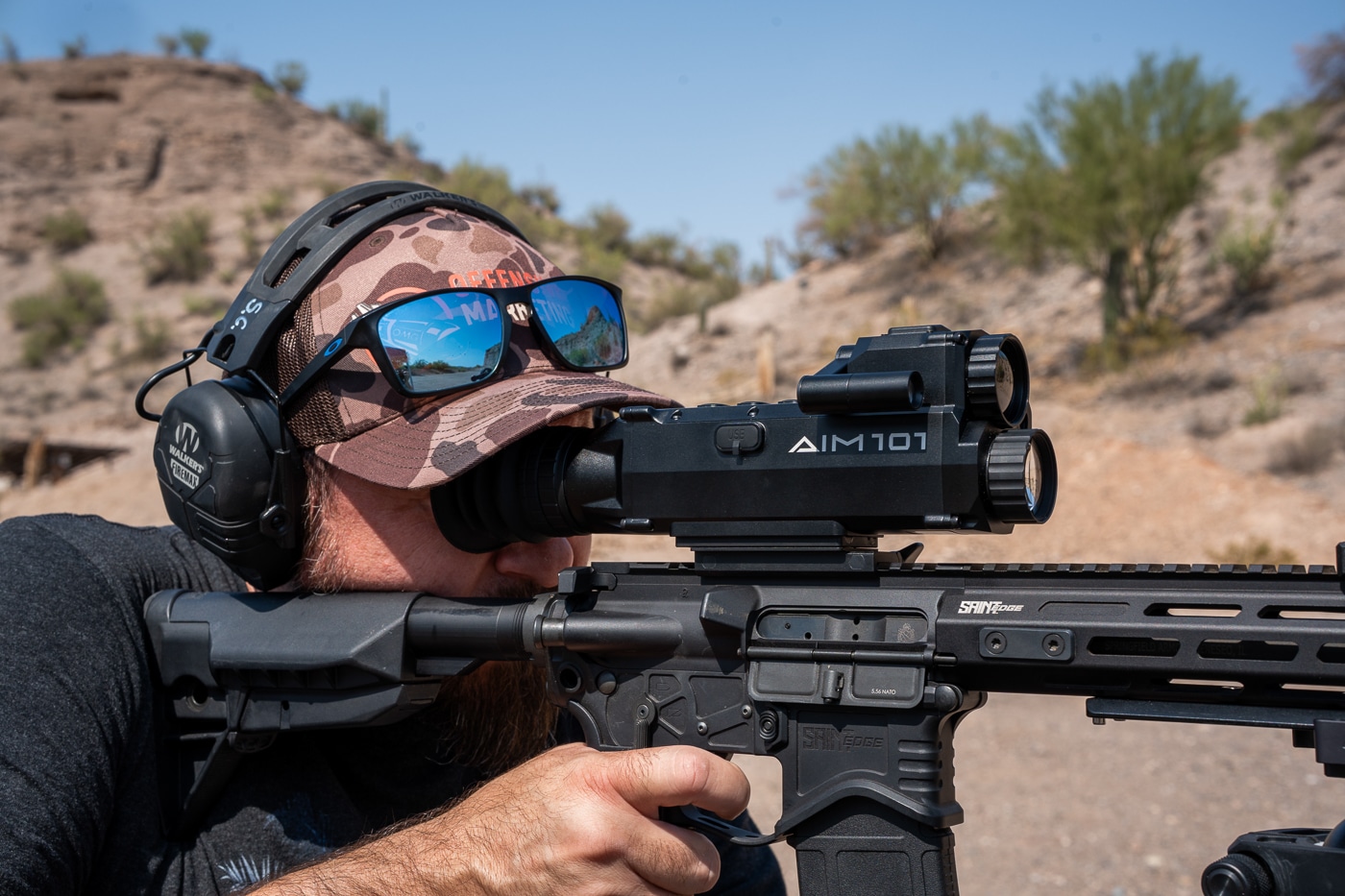
Long before hybrid systems like the Shinenyx AIM‑101 existed, night vision and thermal imaging technology developed along separate paths throughout the 20th century. Here’s a look at how both technologies came to be and eventually merged into the advanced fusion optics we have today.
Night Vision Origins
Night vision technology has been around longer than most people think. It started back in World War II, when both Germany and the Allies created early infrared scopes. Crude and bulky by today’s standards, these first-generation systems used active infrared, meaning they required an external IR light source that only the optic could see. Although not exactly stealthy or efficient in terms of the size of the hardware and battery life, it presented a tactical advantage and served as a starting point.
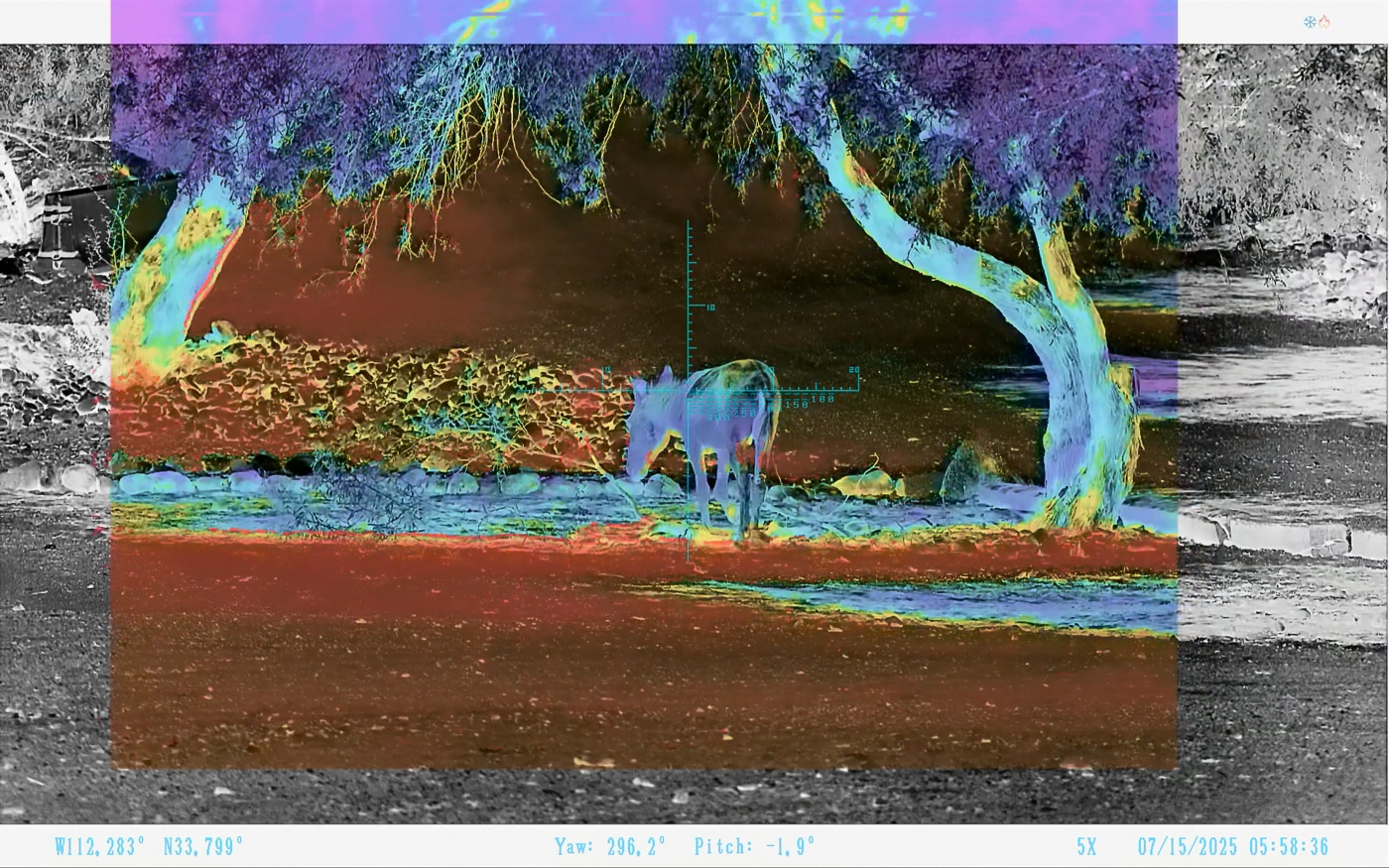
As the technology progressed throughout the 1950s and 1960s, passive night vision systems emerged. These units could amplify the available ambient light without the need for infrared illumination. Improvements in manufacturing capabilities and the technology helped usher in the arrival of Generation 1 night vision and set the stage for major advances and rapid development thereafter.
During the Vietnam War, Generation 2 came into play, improving low-light performance with better image intensifiers. Generation 3 arrived in the 1980s and 1990s, introducing improved resolution, gain, and photocathode materials that extended tube life. This technology is still widely used in modern military analog systems across the globe.
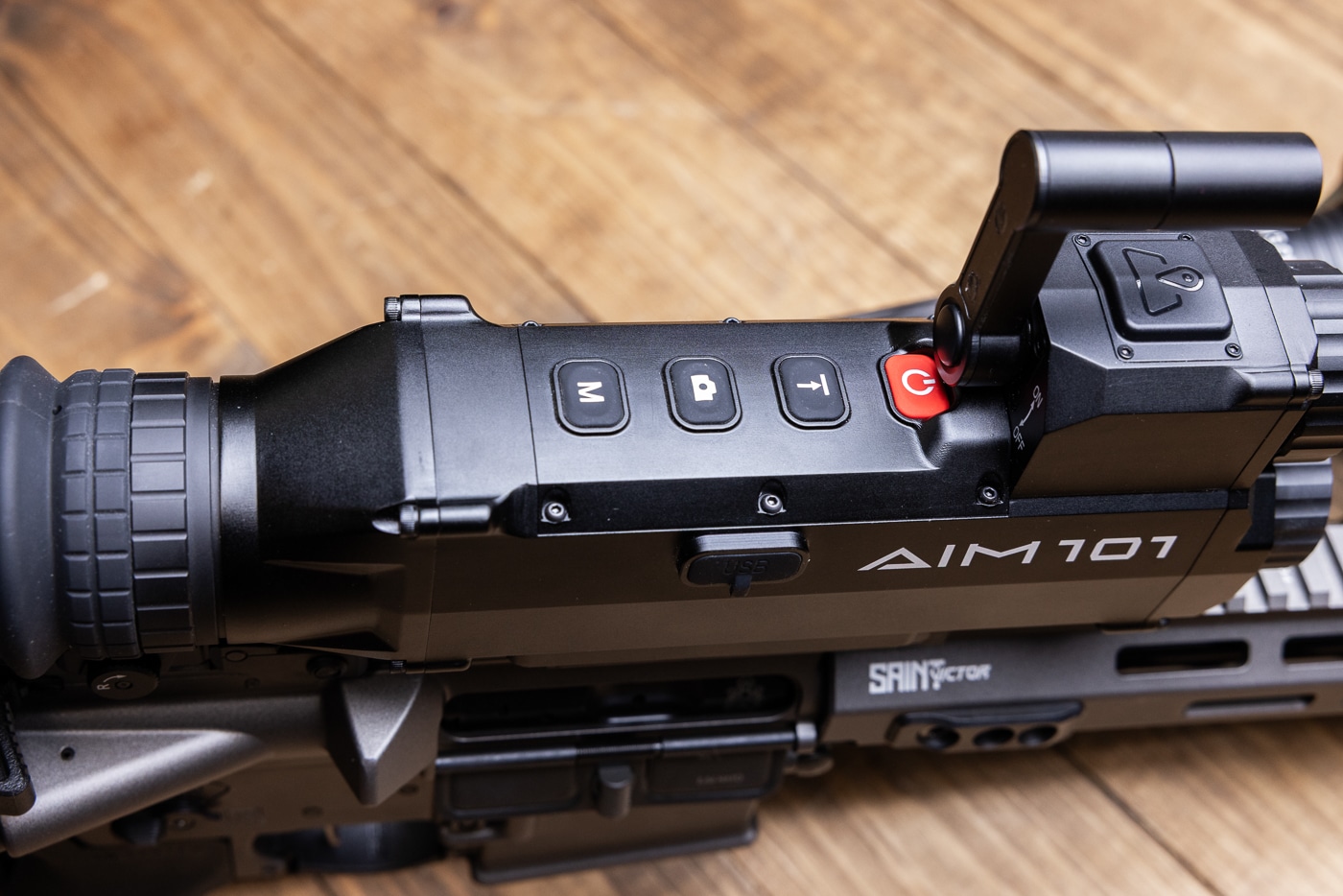
In recent years, digital night vision has gained traction with the incorporation of solid-state sensors that capture and process low-light imagery. Unlike traditional tube-based NV, these digital systems allow for real-time recording, easier integration with other imaging tech, and increased durability in the field. This digital evolution made it possible to pair night vision with thermal into a single optic, which is exactly what modern fusion systems like the AIM‑101 do.
Thermal Imaging Origins
Thermal imaging has a slightly different back story. It began with infrared detection research in the 1920s and 1930s, but it wasn’t until World War II that militaries started experimenting with it seriously.
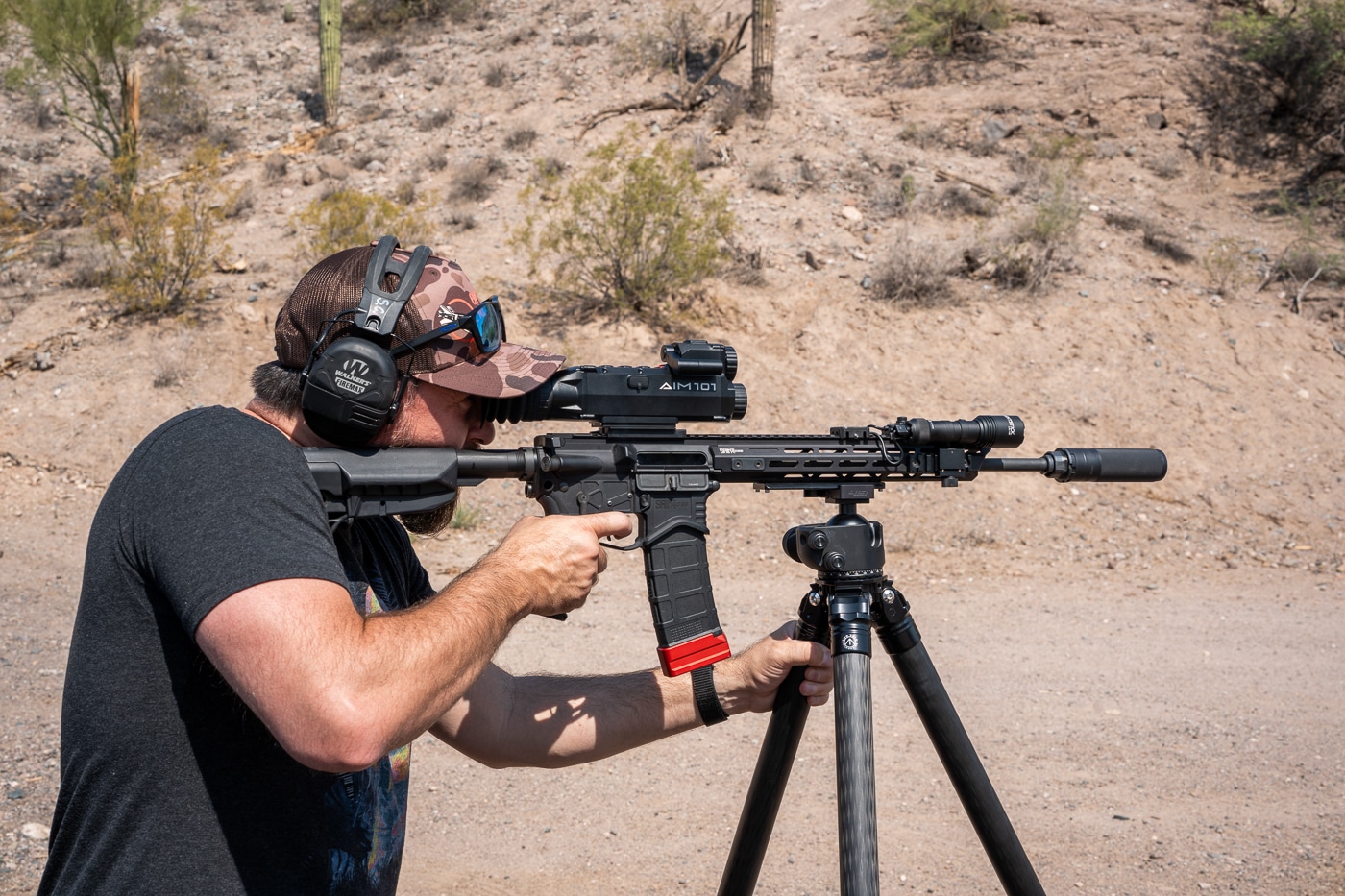
Early thermal systems were massive and required cryogenic cooling. They were typically vehicle-mounted or used in surveillance platforms rather than on-foot applications — a far cry from the portable handheld and rifle-mounted capabilities that modern tech affords users.
Progress in thermal tech continued to develop slowly until the 1970s and 1980s, when portable thermal imagers began to emerge. These were still large, expensive, and mainly used by elite units or for specialized roles. The real shift came in the 1990s with the development of uncooled microbolometers. These sensors eliminated the need for cryogenic cooling and drastically reduced the size and power demands of thermal optics. That advancement allowed thermal to move into handheld and weapon-mounted applications.
Today, uncooled thermal sensors are everywhere, and you can even buy modules that connect to your cellular devices to detect heat signatures. The current generation of thermal imagers feature compact enclosures and high-resolution thermal imagers that are widely employed by hunters, law enforcement, search and rescue teams, and now general outdoor users.
The AIM‑101 uses this type of sensor to deliver real-time thermal imaging in a compact optic that fits a wide range of roles.
Fusion Optics Come Together
By the early 2000s, combining night vision and thermal into a single optic became a serious pursuit. Early fusion systems were primarily used by military and special operations units who coveted compact multi-purpose gear that combined both detection and identification tools in one device. The ability to switch between night vision and thermal, or to combine the two in a fusion view, has proven to be a major advantage in complex environments.
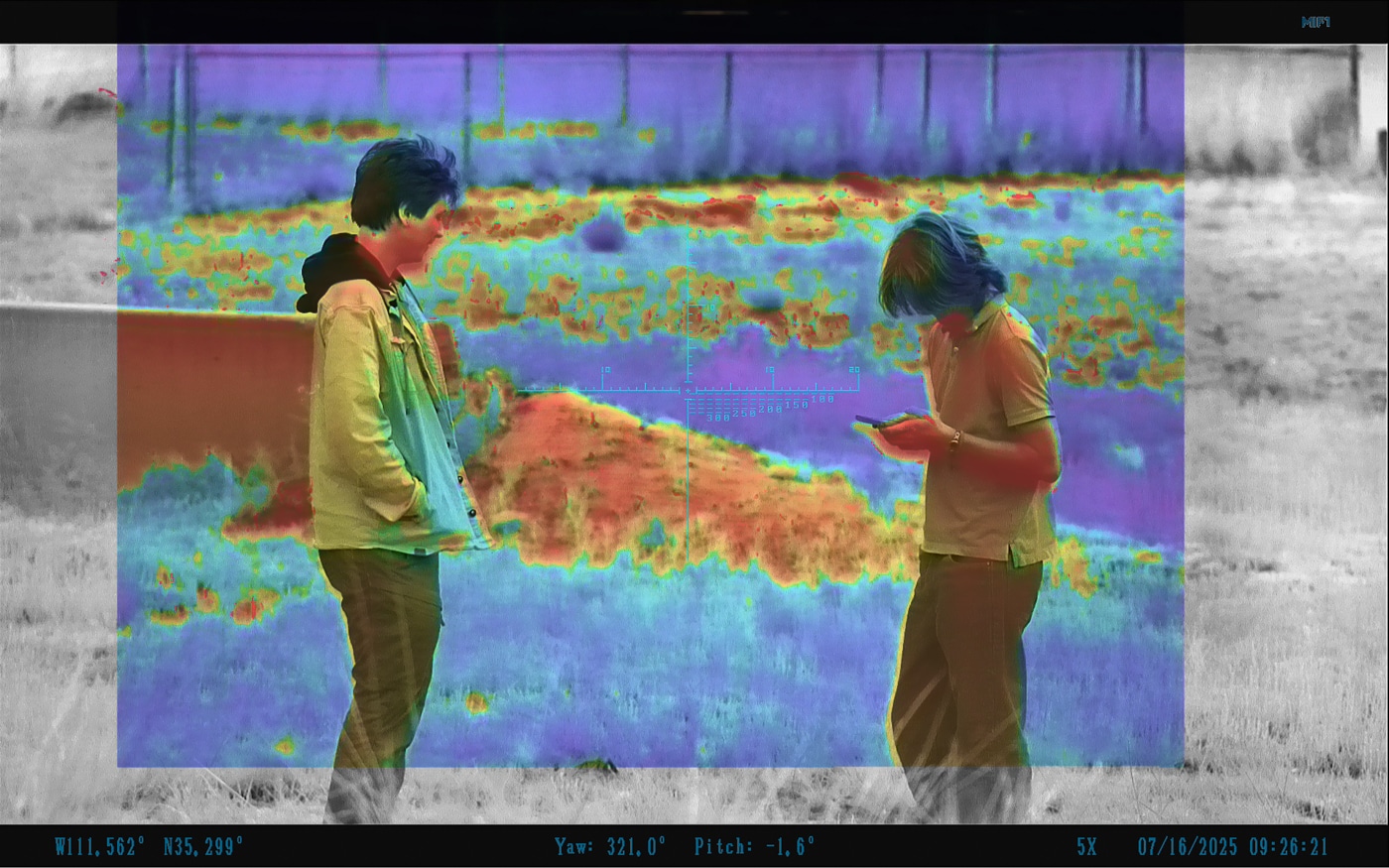
As sensor tech improved across both NV and thermal, costs came down, and fusion optics began entering the civilian market. The combination of digital night vision and thermal allows users to scan for heat signatures, confirm visual identity, and record footage all within the same unit. This kind of flexibility used to be reserved for highly specialized equipment, but now it’s becoming standard for modern multi-role optics.
The Shinenyx AIM‑101 is a great example of where this technology has landed. It merges digital night vision with thermal, adds smart features like a laser rangefinder and onboard recording, and packages it all in a system that feels just as at home on the range as it does in a field during a nighttime search.
Not to mention, at the time of writing this article, with a price point of $2,999.00, the cost has decreased while the value of the tool has increased exponentially.
AIM-101 Key Features
The AIM‑101 uses Fused Image Technology (F.I.T.) to blend real-time digital NV with thermal overlays. You can toggle between thermal-only, night vision-only, or the combined hybrid mode, depending on your environment and preference.
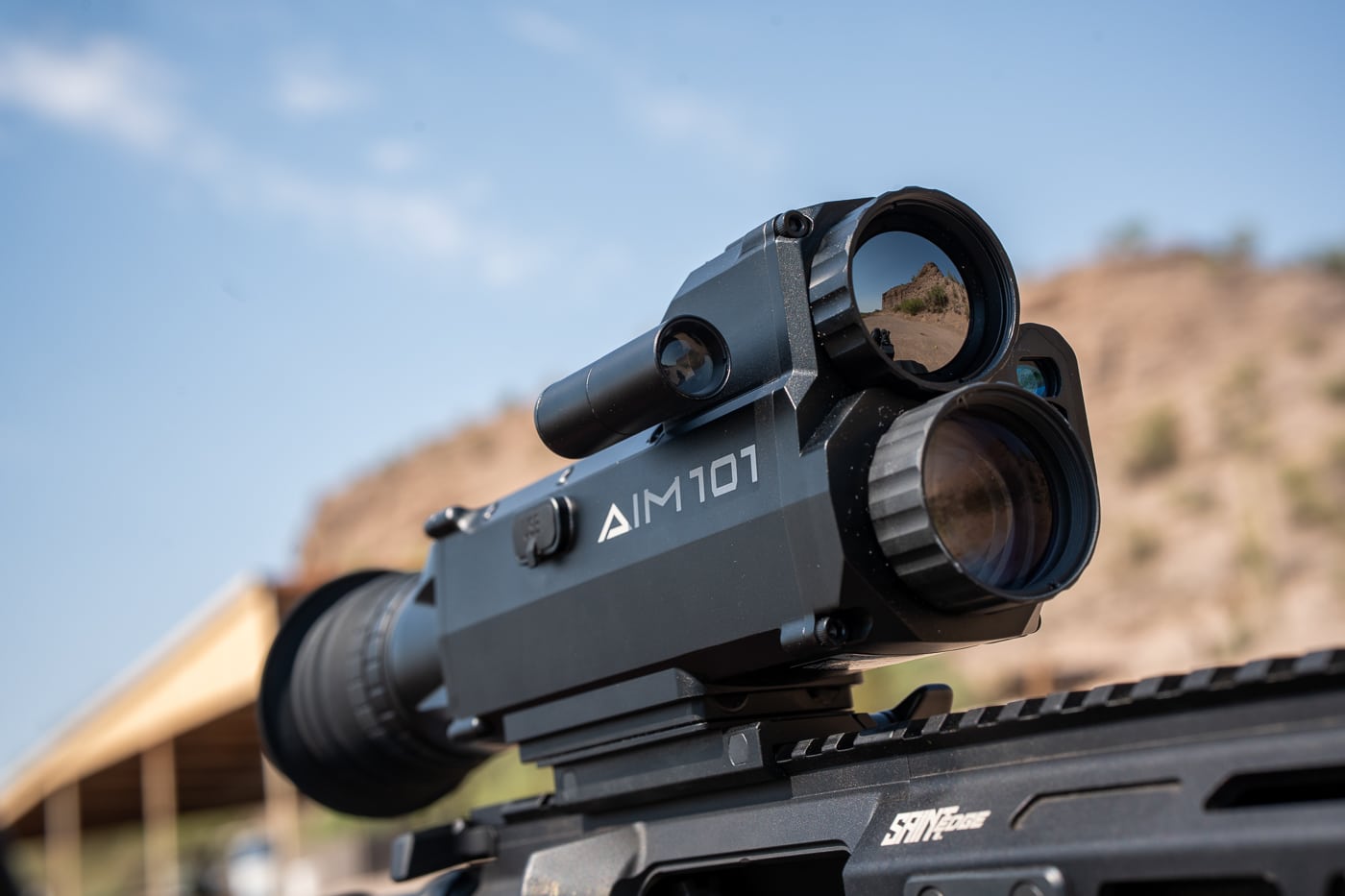
The scope features a vibrant and high definition 2.1” LCD screen with a 1600×1200 resolution. It’s noticeably larger than many competing optics, and the eyepiece allows for a wide, immersive view, especially useful for extended observation.
With a built-in Laser Ranger Finder effective out to 1,200 yards and onboard ballistic calculations, the AIM‑101 provides targeting data in real-time. This is a big advantage for users who need fast decision-making in dynamic environments.
One of my favorite features of this unit is Rapid Target Outline (RTO) mode, which helps visually isolate heat signatures against complex backgrounds. Target highlighting also makes it easier to identify and engage threats.
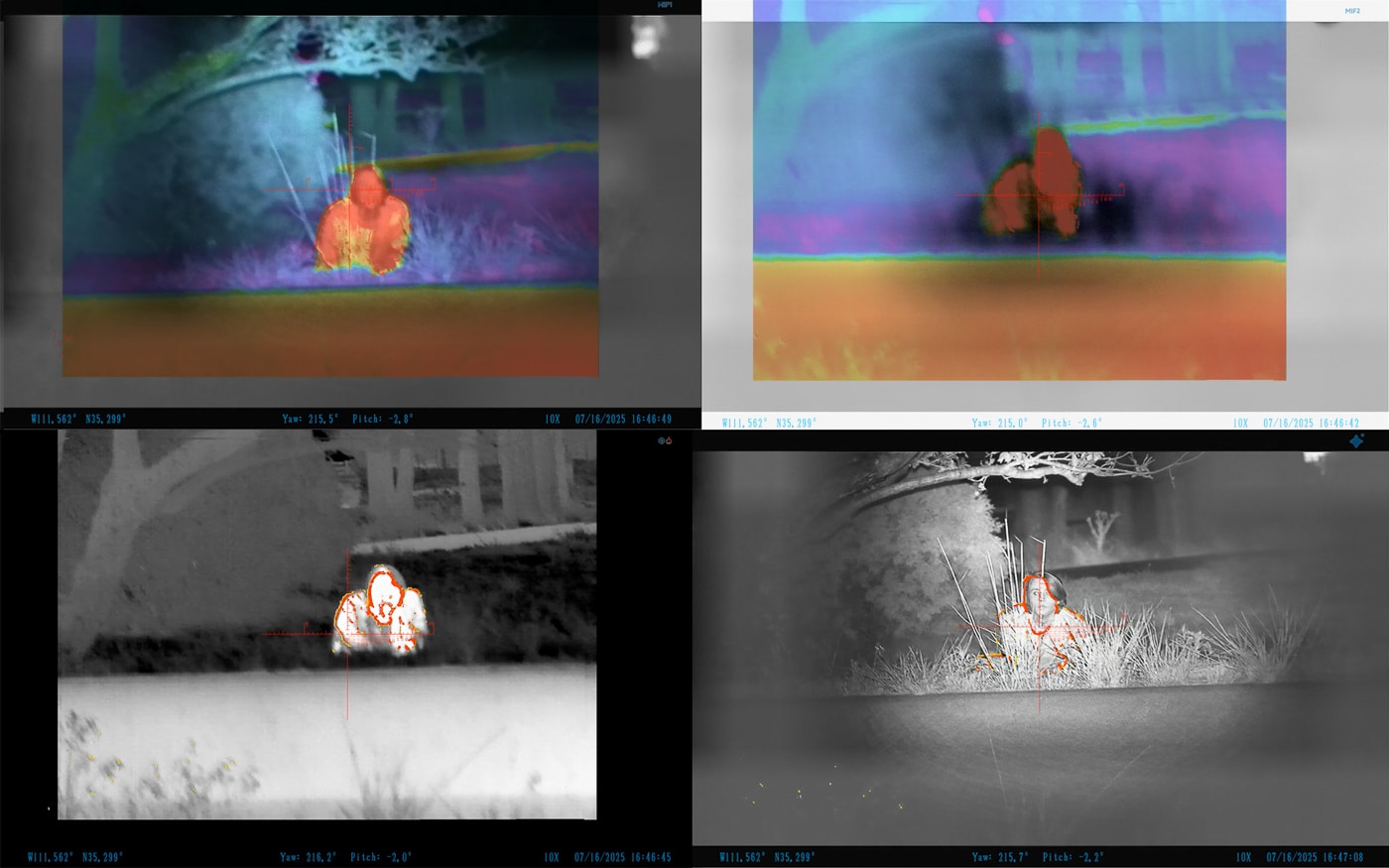
The physical interface includes streamlined controls, including a scroll wheel on the left hand side of the unit and shortcut buttons located on the top of the unit for intuitive control. The buttons include Power, Range Finder, Image Capture/Video Record and Mode button, virtually eliminating the need to dive through deep menus when you just need to make quick adjustments in the field.
The AIM‑101 is rugged and recoil tested. It features an IPX5 waterproof rating, and it also operates in extreme temperatures from –20 °F to +110 °F. Also, it is rated to withstand the recoil from 1,000 rounds of 7.62 NATO. This thing is clearly built to last.
The dual camera sensor set-up features a 1/1.8” Night Vision Sensor with 1920×1080 resolution. The Thermal Sensor affords 384×288 resolution and a 0.36” core with 25 Hz refresh rate. Together, they deliver strong detection and identification performance, day or night. The digital magnification levels include 5.2×, 10.4×, and 20.8× options, giving you flexible optical reach in both night vision and thermal modes.
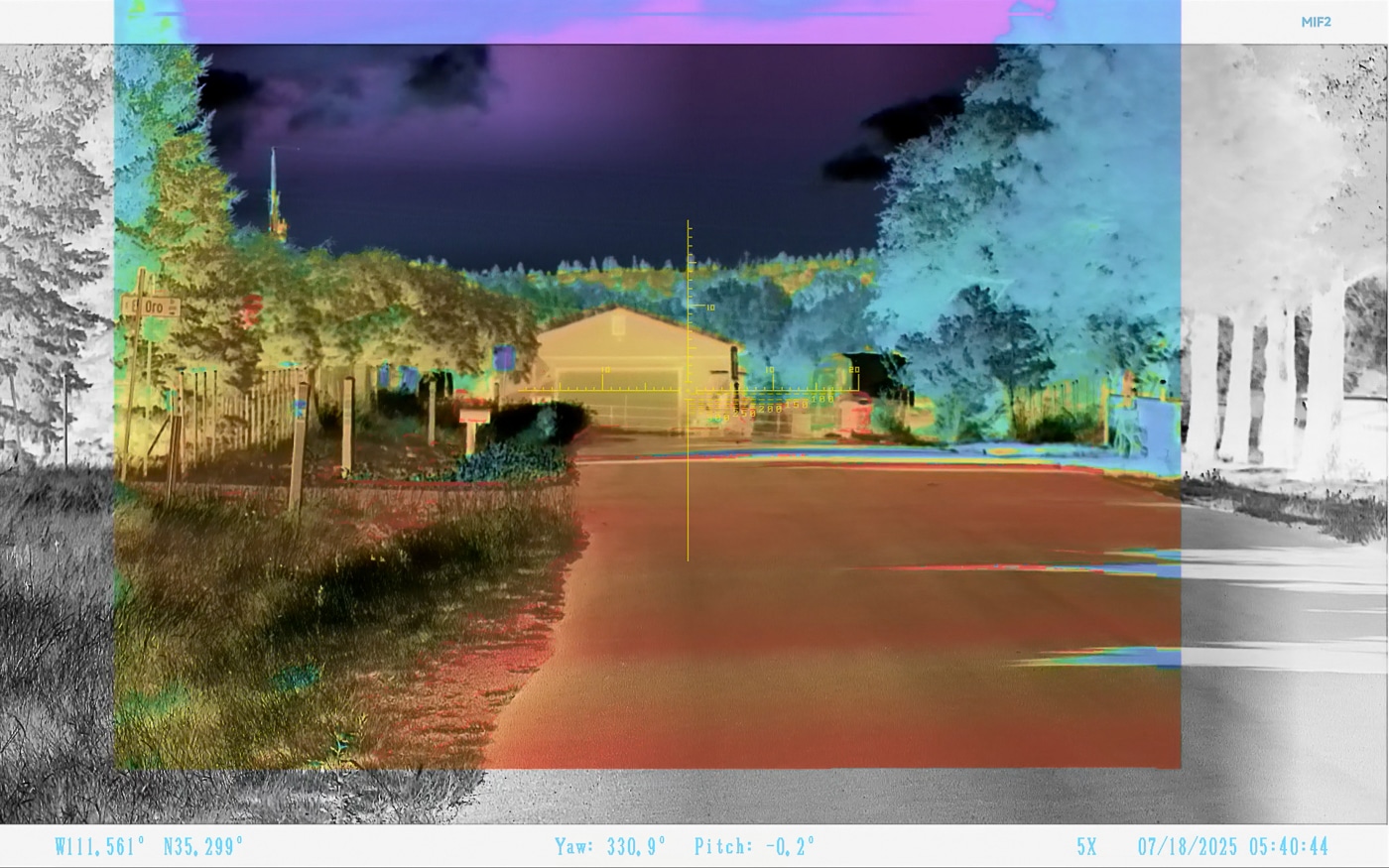
The ample 128GB of internal onboard video and image storage supports over 15 hours of full-resolution 1920×1200 video capture. No microSD cards needed, and no hunting for cables, just clean and quick content capture capability.
The built-in utilities include a compass, GPS for tagging the location of your observation, and a USB‑C port for live video output, charging, and firmware updates. The Aim-101 is powered by two standard 18650 batteries and can also be powered via USB‑C. In general, the runtime clocks in around eight hours.
For Whom It’s Designed
The AIM‑101 is a versatile unit that is really well suited for serious end users. The array of capabilities in this fusion system, coupled with the extremely robust build and battery life, make it a great fit for individuals that need a reliable thermal/NV for tough environments and long usage periods.
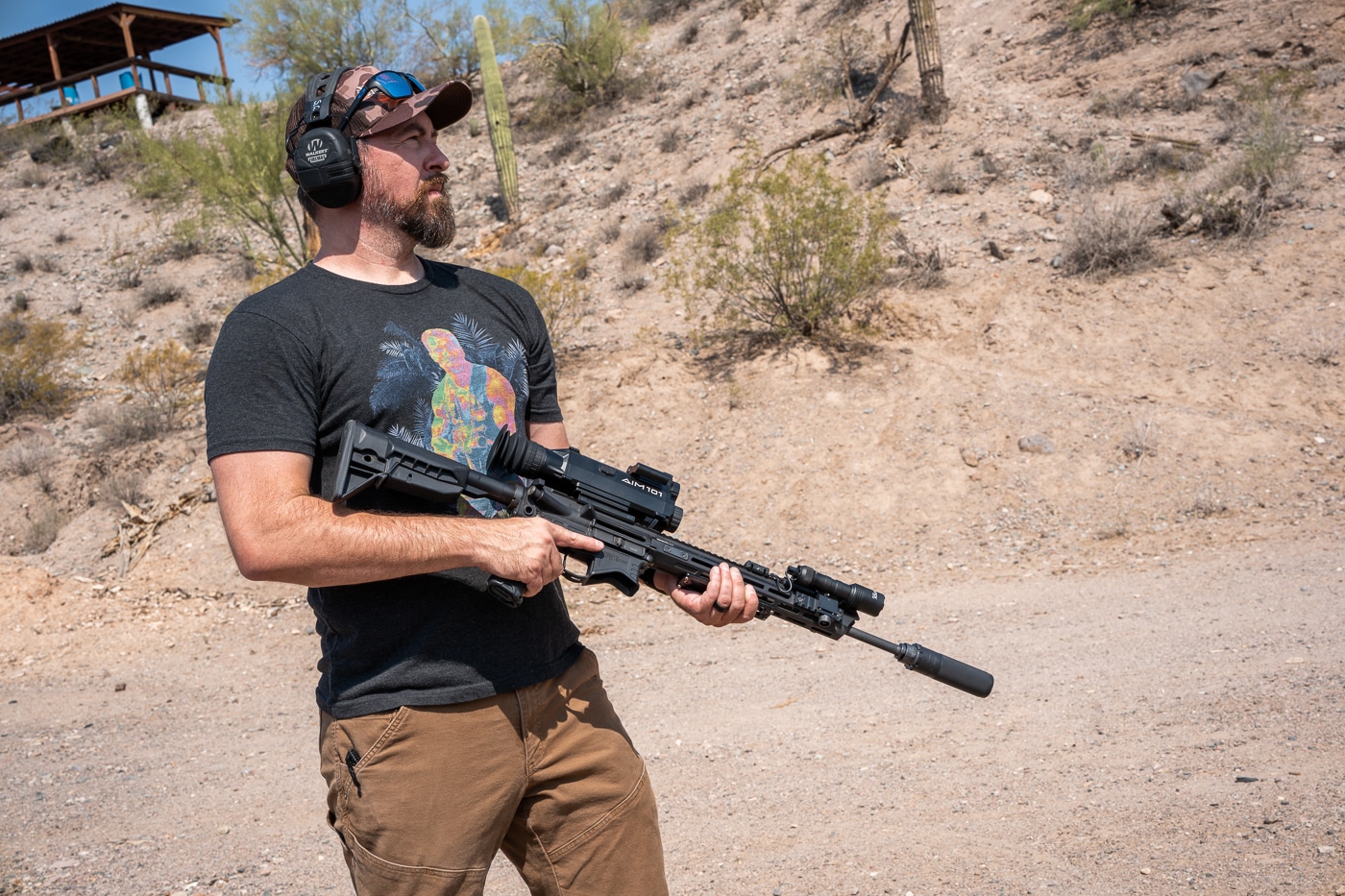
Based on my hands-on time, I’d recommend it for predator and varmint hunters, hog hunters, search and rescue operators and anyone seeking a compact, hybrid handheld or weapon-mounted optic for observation and detection.
[Be sure to read Atticus James’ article on hog hunting with night vision.]
It truly packs in the best of both worlds between thermal applications and night vision capability. For those interested in doing a full tech and spec deep dive, a breakdown of the units’ capabilities is available on the Shinenyx website.
Initial Impressions and Set-Up
Straight out of the box, the AIM‑101 made a strong impression. The design is clean, straightforward, and clearly built for real-world use. Across the top of the unit are four well-spaced, rubberized buttons, each clearly marked for Power, Laser Range Finder, Video and Snapshot, and Image Mode. Compared to other thermals I’ve tested, which often rely on small or confusing button layouts, this set-up keeps things simple. That matters, especially in low-light conditions where you need to operate by feel.
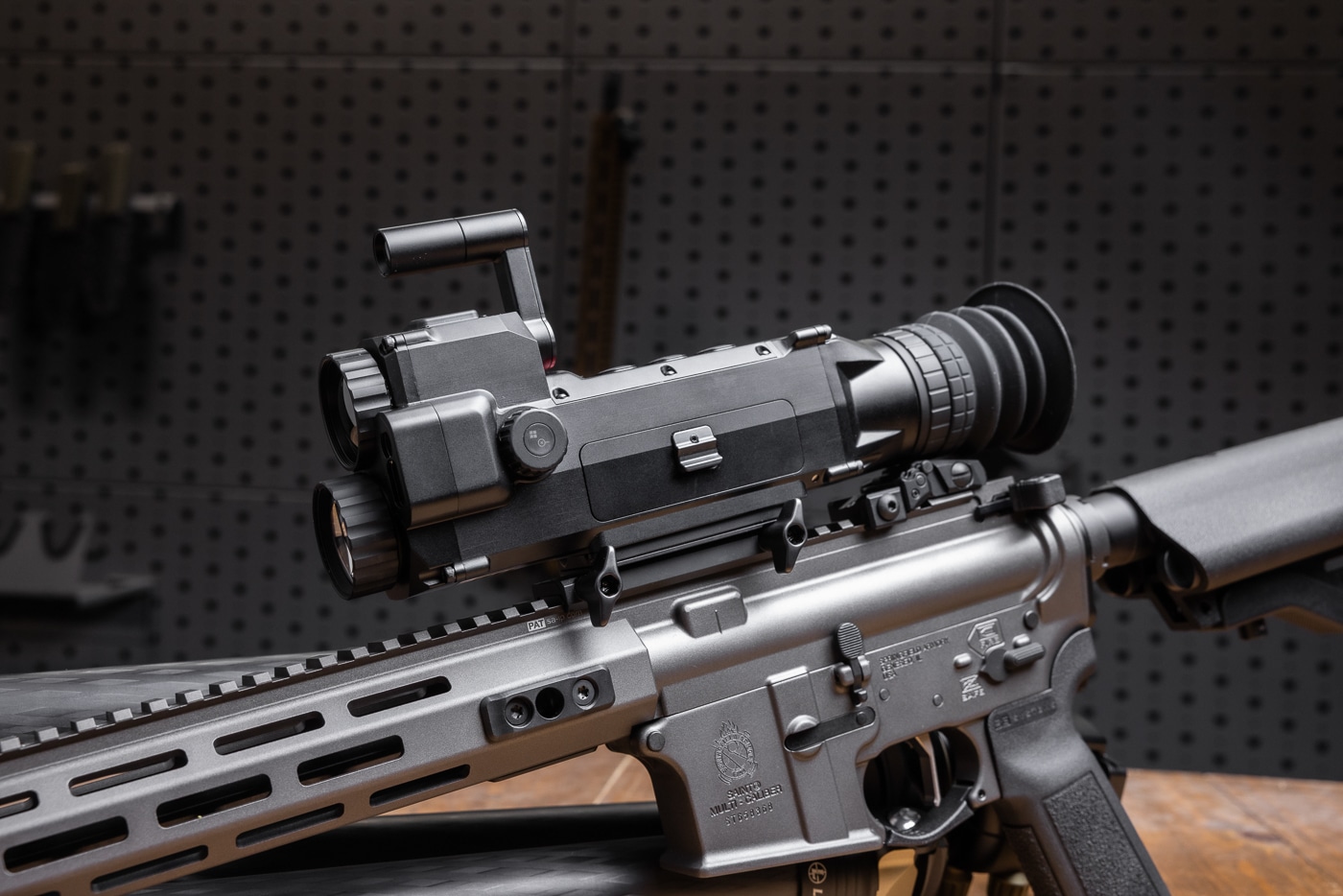
The scroll wheel on the side is used to navigate the menu system. Press to enter, turn to scroll. It’s fast and responsive, and the menus are clearly labeled. You can customize just about everything — reticle style and color, zeroing distance, GPS tagging, laser ranging modes, and more. The unit ships with a QR code linking to the full digital manual, a USB-C cable for charging and file management, and an Allen key for mounting adjustments.
Another thing that stood out right away was the build quality. The unit weighs about 2.2 lbs. with batteries installed. It feels solid, substantial and ready for field use. The all-metal housing and rubberized controls give it a rugged, no-nonsense feel that holds up under rough handling.
After a quick skim through the manual, I powered the unit on. The control layout was intuitive, and within minutes I had the image dialed in. Focusing the diopters for both the thermal and night vision lenses produced a crystal-clear view on the bright, high-contrast LCD screen. The included eye cup did its job, sealing out ambient light, even in the middle of the day.
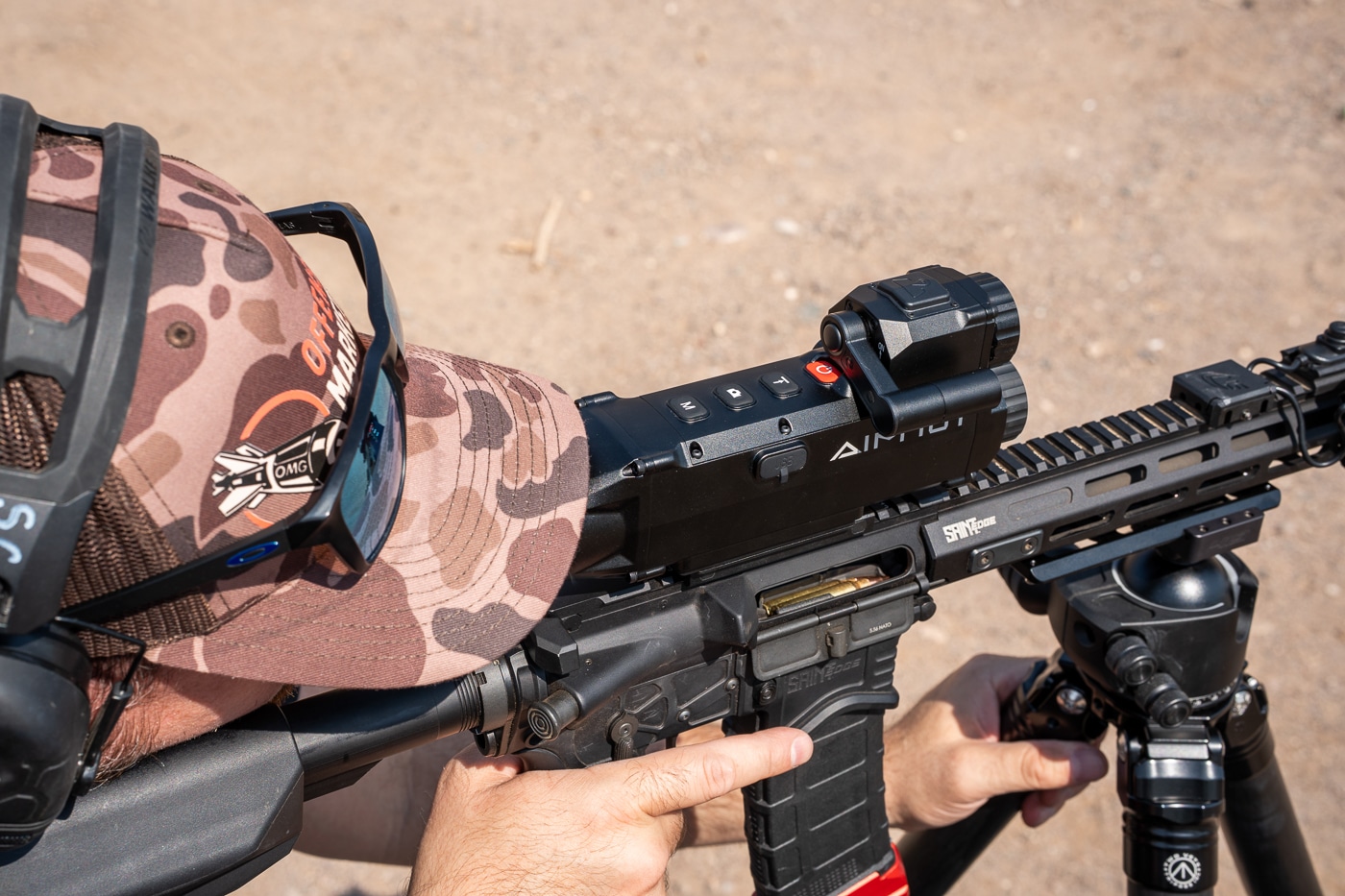
Testing it around the house, the hybrid imaging system became an immediate standout. Thermal overlays revealed heat signatures clearly, and the red target outline in RTO mode gave me fast visual confirmation. The digital zoom, controlled by the scroll wheel, was quick and let me punch in for close-up ID with zero lag. Once I wrapped up testing indoors, it was time to bring it into the field and see how it performed where it counts.
Range Impressions
I mounted the AIM‑101 on my Springfield Armory SAINT Edge and brought it out to a local 100-yard flat range for testing. The plan was to zero the optic, confirm reliability, and evaluate how well the thermal sensor performed in real-world conditions.
It was already 95 degrees Fahrenheit by 7:30 a.m., so to create some visual contrast in the thermal modes, I taped HotHands hand warmers to the targets. They showed up bright white in the thermal view and worked great as heat sources. It took a few rounds to get dialed in, but once the optic was zeroed, it stayed locked in throughout the session. The screen remained bright and easy to see even in full sun, which is rare. The AIM‑101’s display is easily one of the most visible I’ve used in harsh light.
Fusion mode with RTO enabled gave me fast acquisition, clear heat detection, and a red outline for instant confirmation. It felt intuitive and clean, not overwhelming or busy. I shot in 30-minute bursts, capturing footage as I went, and still had plenty of battery left. The unit never overheated, stayed responsive, and handled recoil without shifting. It felt rugged and dependable from start to finish. Overall, running the AIM‑101 at the range was a smooth and enjoyable experience, with a clear visual interface and solid performance that made it easy to stay focused on the task.
Leaving the range, I saw some of the local wildlife seeking shade in the form of a local range donkey. I hopped out of the truck and captured some footage, and it was easily trackable and allowed me to follow it as it milled around some of the structures.
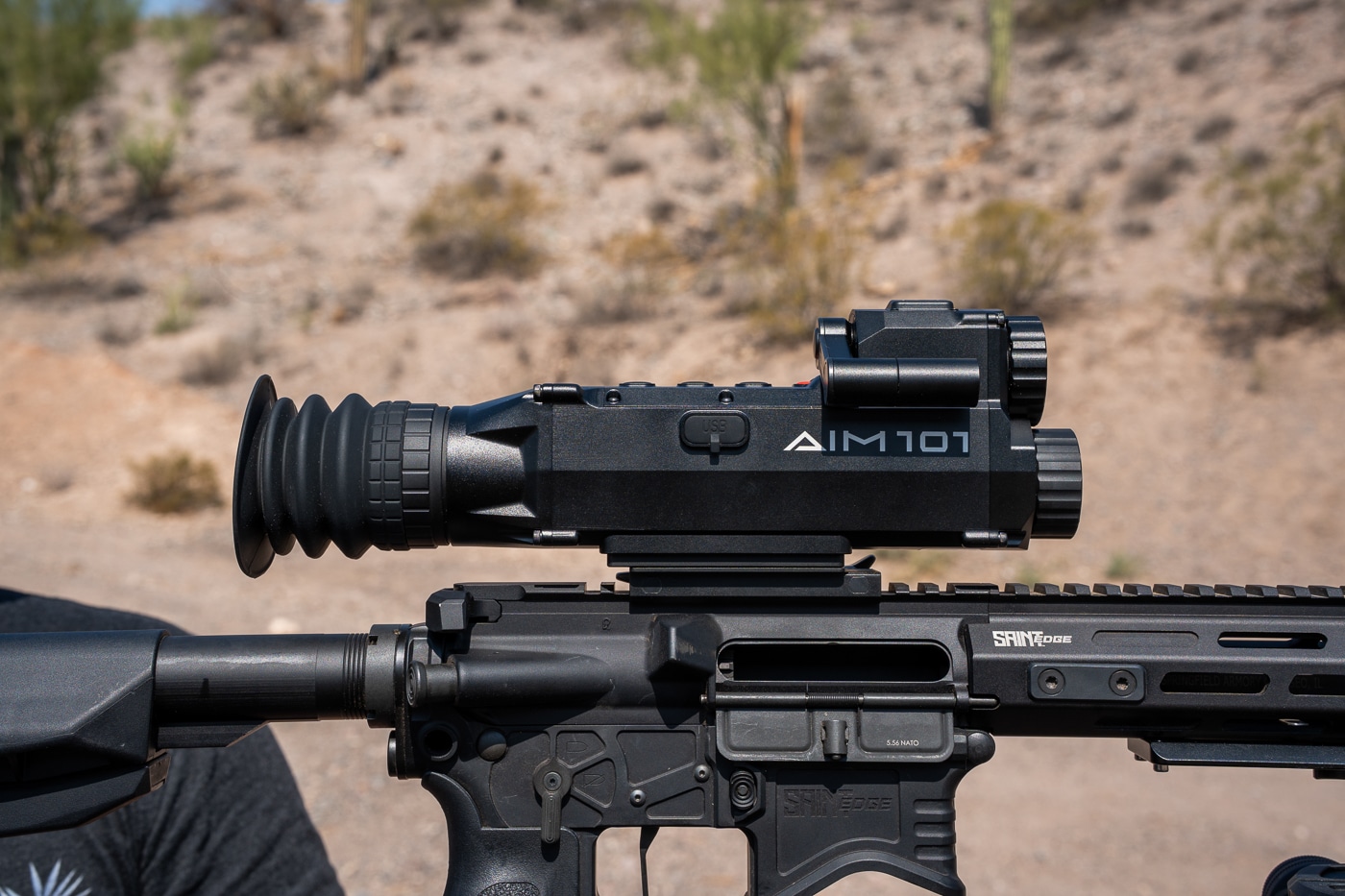
I also took the AIM‑101 up to Flagstaff, Arizona, where my folks have a house, to run some tests in cooler nighttime conditions. With about two acres of property to work with, I had my kids play a round of fusion optic hide and seek once the sun went down.
Spoiler alert: using the AIM‑101 is basically cheating. Almost immediately, I was able to spot red outlines around bright heat sources as they moved and peeked from behind structures, trees and fencing. I enabled the onboard IR flood to boost clarity, and the image became even sharper. Zooming in, I could easily identify each kid, seeing full detail as they crouched or moved between cover. It was fun, fast, and incredibly effective.
Beyond the entertainment value, it turned out to be a perfect real-world use case for nighttime observation and detection, proving just how capable and responsive the unit is when scanning a wide, dynamic environment in low light.
Final Thoughts
If you’re in the market for a dependable, feature-rich electro optic that blends night vision, thermal imaging, and smart targeting tools into a single platform, the AIM‑101 is absolutely worth a look. It’s built like a professional-grade tool, but intuitive enough for first-time users, making it a great fit for a wide range of users, from predator and varmint hunters to ranchers, landowners, search and rescue teams, and tactical professionals.
Having thermal, digital night vision, fusion mode, GPS, a laser range finder, and onboard recording all in one optic eliminates the need to carry multiple devices or make compromises in the field. Whether you’re scanning terrain, identifying heat signatures, or confirming targets up close, this unit delivers reliable performance in a compact, robust, and rugged package. If you’ve been looking to add a hybrid optic to your kit, the AIM‑101 should be on your shortlist.
Editor’s Note: Please be sure to check out The Armory Life Forum, where you can comment about our daily articles, as well as just talk guns and gear. Click the “Go To Forum Thread” link below to jump in and discuss this article and much more!
Join the Discussion
Featured in this video
Read the full article here



